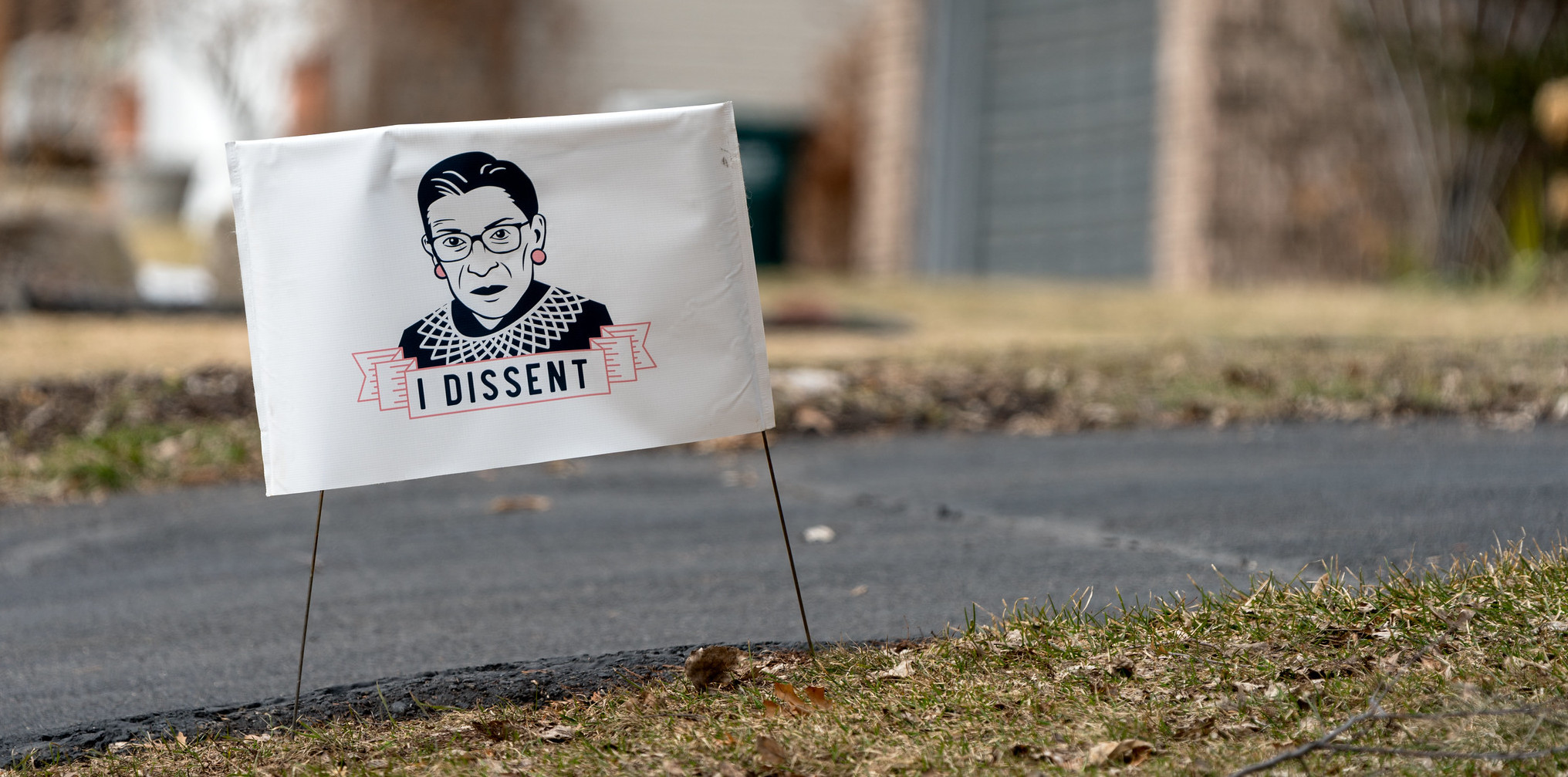When US Supreme Court Justice Ruth Bader Ginsburg did not agree with a majority decision in her later years on the bench, everyone knew it as soon as she walked into the courtroom. She would wear her “dissent collar”—a fake-jeweled, slightly medieval-looking necklace from Banana Republic given to her in 2012.
But being able to “dissent”—or writing about it as effectively as Ginsburg did—is not a longstanding judicial tradition. As Ginsburg told the Harvard Club in 2009, “In the civil-law tradition that holds sway in Europe, and in countries once controlled by a continental power, courts…issue a collective judgment.…The author of the judgment is neither named nor otherwise identifiable. Disagreement, if it exists, as it sometimes does, is not disclosed.” In British common law, each judge releases an opinion, and the majority rule holds.
In the early US Supreme Court, “Each Justice spoke for himself whenever more than a memorandum judgment issued,” Ginsburg said. (That practice is called “seriatim,” from the Latin for “due order,” with the newest judges usually going first.) But that changed after Chief Justice John Marshall joined the Court in 1801. Marshall, Ginsburg said, “thought the ‘each-for-himself’ practice ill-advised.” Instead, Marshall had what Ginsburg called an “unparalleled ability to achieve consensus among his colleagues,” and “the Court spoke with one voice most of the time.” “Dissents” of note were relatively rare until the mid-twentieth century, with Justices William Brennan, Antonin Scalia, and Ginsburg being among the most influential “dissenters.”
“Dissent” simply means disagree, though the early uses, from the mid-fifteenth century, implied “such disagreement as produces strife or contention; discord,” the Oxford English Dictionary says. “Dissent” in the church predates “dissent” in the law, which The Law Dictionary says means “the explicit disagreement of one or more judges of a court with the decision passed by the majority in upon a case before them.”
Ginsburg’s “dissent collar” lives on, in jewelry, clothing, and (because covid) masks, as well as a reissued Banana Republic version. But it was just one of her many “collars,” a tradition she said started with Justice Sandra Day O’Connor out of necessity: “the standard robe is made for a man because it has a place for the shirt to show, and the tie.” She added: “I thought it would be appropriate if we included as part of our robe something typical of a woman.” Ginsburg’s “collars” include those made of lace (her favorite, she said, was made in South Africa), metal, and other fabrics, all fastened around the neck the way necklaces are. “Collar” itself is the older word, tracing to the late thirteenth century, when it was a piece of armor protecting the neck.
At first, Ginsburg and O’Connor wore “jabots,” a piece of fabric that hangs down the front of the robe. “Jabot,” from the French word for “gizzard” or “crop,” was originally a male clothing item, dating to the middle of the seventeenth century. You’ve seen them in classic paintings: a frilly bundle of fabric, often lace, hanging from the neck and sticking out from a waistcoat or vest. It was a sign of upper-class dress, and adopted by barristers in England and Europe. In the mid-nineteenth century, the “jabot” became a women’s fashion item, sometimes as a separate piece, sometimes incorporated into blouses and dresses. But it persisted in some men’s fashions, and occasionally resurfaces. Of course, the famous Seinfeld “puffy shirt” had an attached frilly “jabot” (and those terraced sleeves).
The “jabot”—sometimes called a “neck doily”—is still a standard item in British and other court systems. “The jabot is that other ‘associated accessory’ that has no proven practical purpose to court wear; although, it has been known to help catch the tomato ketchup from a breakfast bap,” the British website Lawyer Monthly opines. The classic “jabot” is just two rectangles of fabric attached to a collar worn with judicial robes.
Neither of the other women currently on the Court, Elena Kagan and Sonia Sotomayor, favor fanciful collars, though Sotomayor has worn a “jabot” occasionally. And while Ginsburg often used “jabot” and “collar” interchangeably, there could be no dissent about what she meant.
ICYMI: A guide to Trump’s reality TV debate techniques
Merrill Perlman managed copy desks across the newsroom at the New York Times, where she worked for twenty-five years. Follow her on Twitter at @meperl.

